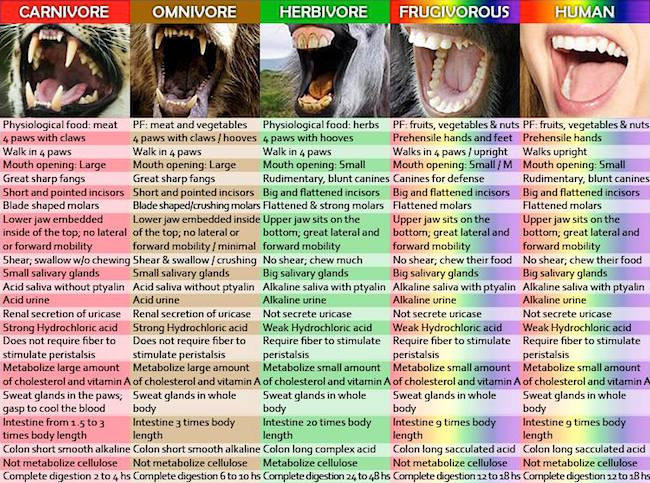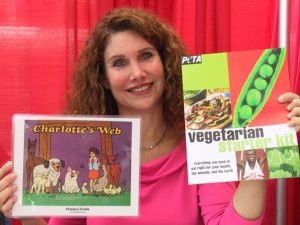 Many Americans, including some vegetarians, still consume large amounts of dairy products; vegans, of course, do not consume any animal products, including dairy. The dairy industry is dependent upon the abuse and slaughter of cows and calves, but if that alone isn’t enough to make you switch to almond or oat milk, here are eight more reasons to eliminate dairy products from your diet.
Many Americans, including some vegetarians, still consume large amounts of dairy products; vegans, of course, do not consume any animal products, including dairy. The dairy industry is dependent upon the abuse and slaughter of cows and calves, but if that alone isn’t enough to make you switch to almond or oat milk, here are eight more reasons to eliminate dairy products from your diet.
1. Osteoporosis
Milk is touted for preventing osteoporosis, yet clinical research shows otherwise. The Harvard Nurses’ Health Study, which followed more than 75,000 women for 12 years, showed no protective effect of increased milk consumption on fracture risk. In fact, increased intake of calcium from dairy products was associated with a higher fracture risk. An Australian study showed the same results. Additionally, other studies have also found no protective effect of dairy calcium on bone. You can decrease your risk of osteoporosis by reducing sodium and animal protein intake in the diet, increasing intake of fruits and vegetables, exercising, and ensuring adequate calcium intake from plant foods such as leafy green vegetables and beans, as well as calcium-fortified products such as breakfast cereals and juices.
2. Cardiovascular Disease
Dairy products—including cheese, ice cream, milk, butter, and yogurt—contribute significant amounts of cholesterol and fat to the diet. Diets high in fat and saturated fat can increase the risk of several chronic diseases including cardiovascular disease. A low-fat vegetarian diet that eliminates dairy products, in combination with exercise, smoking cessation, and stress management, can not only prevent heart disease, but may also reverse it. Non-fat dairy products are available, however, they pose other health risks as noted below.
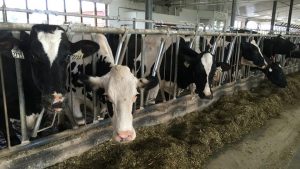 3. Cancer
3. Cancer
Several cancers, such as ovarian cancer, have been linked to the consumption of dairy products. The milk sugar lactose is broken down in the body into another sugar, galactose. In turn, galactose is broken down further by enzymes. According to a study by Daniel Cramer, M.D., and his colleagues at Harvard, when dairy product consumption exceeds the enzymes’ capacity to break down galactose, it can build up in the blood and may affect a woman’s ovaries. Some women have particularly low levels of these enzymes, and when they consume dairy products on a regular basis, their risk of ovarian cancer can be triple that of other women.
Breast and prostate cancers have also been linked to consumption of dairy products, presumably related, at least in part, to increases in a compound called insulin-like growth factor (IGF-I). IGF-I is found in cow’s milk and has been shown to occur in increased levels in the blood by individuals consuming dairy products on a regular basis. Other nutrients that increase IGF-I are also found in cow’s milk. A recent study showed that men who had the highest levels of IGF-I had more than four times the risk of prostate cancer compared with those who had the lowest levels.
4. Diabetes
Insulin-dependent diabetes (Type I or childhood-onset) is linked to consumption of dairy products. Epidemiological studies of various countries show a strong correlation between the use of dairy products and the incidence of insulin-dependent diabetes. Researchers in 1992 found that a specific dairy protein sparks an auto-immune reaction, which is believed to be what destroys the insulin-producing cells of the pancreas.
5. Lactose Intolerance
 Lactose intolerance is common among many populations, affecting approximately 95 percent of Asian Americans, 74 percent of Native Americans, 70 percent of African Americans, 53 percent of Mexican Americans, and 15 percent of Caucasians. Symptoms, which include gastrointestinal distress, diarrhea, and flatulence, occur because these individuals do not have the enzymes that digest the milk sugar lactose. Additionally, along with unwanted symptoms, milk-drinkers are also putting themselves at risk for development of other chronic diseases and ailments.
Lactose intolerance is common among many populations, affecting approximately 95 percent of Asian Americans, 74 percent of Native Americans, 70 percent of African Americans, 53 percent of Mexican Americans, and 15 percent of Caucasians. Symptoms, which include gastrointestinal distress, diarrhea, and flatulence, occur because these individuals do not have the enzymes that digest the milk sugar lactose. Additionally, along with unwanted symptoms, milk-drinkers are also putting themselves at risk for development of other chronic diseases and ailments.
6. Vitamin D Toxicity
Consumption of milk may not provide a consistent and reliable source of vitamin D in the diet. Samplings of milk have found significant variation in vitamin D content, with some samplings having had as much as 500 times the indicated level, while others had little or none at all. Too much vitamin D can be toxic and may result in excess calcium levels in the blood and urine, increased aluminum absorption in the body, and calcium deposits in soft tissue.
7. Contaminants
Synthetic hormones such as recombinant bovine growth hormone (rBGH) are commonly used in dairy cows to increase the production of milk. Because the cows are producing quantities of milk nature never intended, the end result is mastitis, or inflammation of the mammary glands. The treatment requires the use of antibiotics, and traces of these and hormones have been found in samples of milk and other dairy products. Pesticides and other drugs are also frequent contaminants of dairy products.
8. Health Concerns of Infants and Children
 Milk proteins, milk sugar, fat, and saturated fat in dairy products may pose health risks for children and lead to the development of chronic diseases such as obesity, diabetes, and formation of athersclerotic plaques that can lead to heart disease.
Milk proteins, milk sugar, fat, and saturated fat in dairy products may pose health risks for children and lead to the development of chronic diseases such as obesity, diabetes, and formation of athersclerotic plaques that can lead to heart disease.
The American Academy of Pediatrics recommends that infants below one year of age not be given whole cow’s milk, as iron deficiency is more likely on a dairy-rich diet. Cow’s milk products are very low in iron. If they become a major part of one’s diet, iron deficiency is more likely. Colic is an additional concern with milk consumption. One out of every five babies suffers from colic. Pediatricians learned long ago that cows’ milk was often the reason. We now know that breastfeeding mothers can have colicky babies if the mothers are consuming cow’s milk. The cows’ antibodies can pass through the mother’s bloodstream into her breast milk and to the baby. Additionally, food allergies appear to be common results of milk consumption, particularly in children. A recent study also linked cow’s milk consumption to chronic constipation in children. Researchers suggest that milk consumption resulted in perianal sores and severe pain on defecation, leading to constipation.
Milk and dairy products are not necessary in the diet and can, in fact, be harmful to your health. Consume a healthful diet of grains, fruits, vegetables, legumes, and fortified foods including cereals and juices. These nutrient-dense foods can help you meet your calcium, potassium, riboflavin, and vitamin D requirements with ease—and without the health risks.
 Alzheimer’s disease is an irreversible brain disorder that leads to memory loss and a general decline in cognitive function. The disease is marked by an unnatural breakdown of connections between damaged brain cells and by eventual brain-cell death. Alzheimer’s disease kills nearly 54,000 people every year in the U.S. alone and affects millions more. It has affected my family directly and perhaps yours as well.
Alzheimer’s disease is an irreversible brain disorder that leads to memory loss and a general decline in cognitive function. The disease is marked by an unnatural breakdown of connections between damaged brain cells and by eventual brain-cell death. Alzheimer’s disease kills nearly 54,000 people every year in the U.S. alone and affects millions more. It has affected my family directly and perhaps yours as well.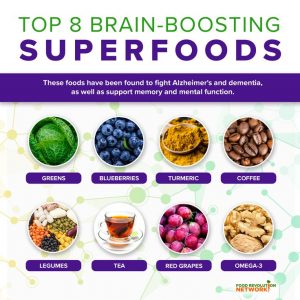 What is the cause of this deadly and frightening affliction? Recent research suggests that Alzheimer’s disease, like heart disease and strokes, is linked to the saturated fat, cholesterol, and toxins found in our diet. Studies have shown that people with diets full of meat and dairy products have a greater risk of developing Alzheimer’s disease than do those whose diet is more generally plant based. The protective properties of chemicals commonly found in plants—such as antioxidants, vitamins, and minerals—have been shown to help substantially lower the risk of developing Alzheimer’s disease.
What is the cause of this deadly and frightening affliction? Recent research suggests that Alzheimer’s disease, like heart disease and strokes, is linked to the saturated fat, cholesterol, and toxins found in our diet. Studies have shown that people with diets full of meat and dairy products have a greater risk of developing Alzheimer’s disease than do those whose diet is more generally plant based. The protective properties of chemicals commonly found in plants—such as antioxidants, vitamins, and minerals—have been shown to help substantially lower the risk of developing Alzheimer’s disease.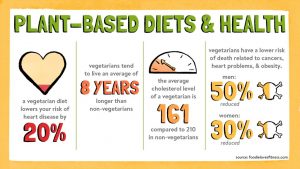 The bottom line is that a diet rich in whole grains, fruits, and vegetables provides an abundance of antioxidants that can help prevent Alzheimer’s disease. These antioxidants, including vitamin C, vitamin E, beta carotene, and selenium, can counteract the damaging effects of free radicals in the brain and throughout the body as well as help lower your cholesterol.
The bottom line is that a diet rich in whole grains, fruits, and vegetables provides an abundance of antioxidants that can help prevent Alzheimer’s disease. These antioxidants, including vitamin C, vitamin E, beta carotene, and selenium, can counteract the damaging effects of free radicals in the brain and throughout the body as well as help lower your cholesterol.


